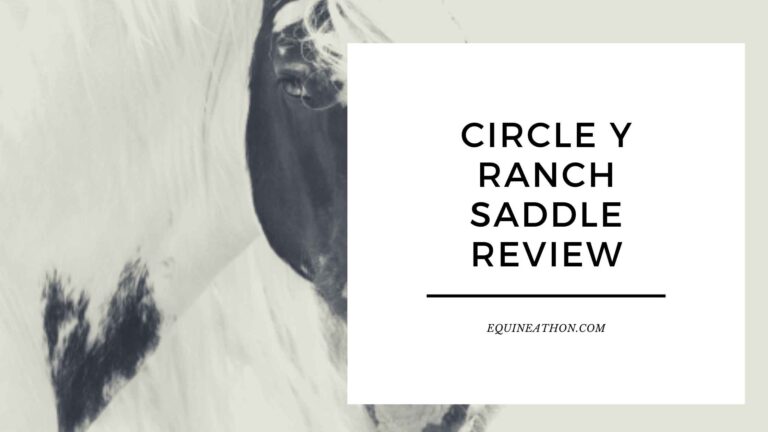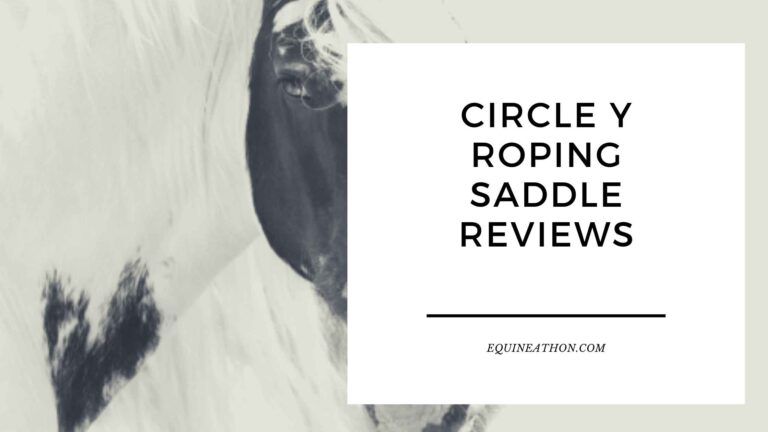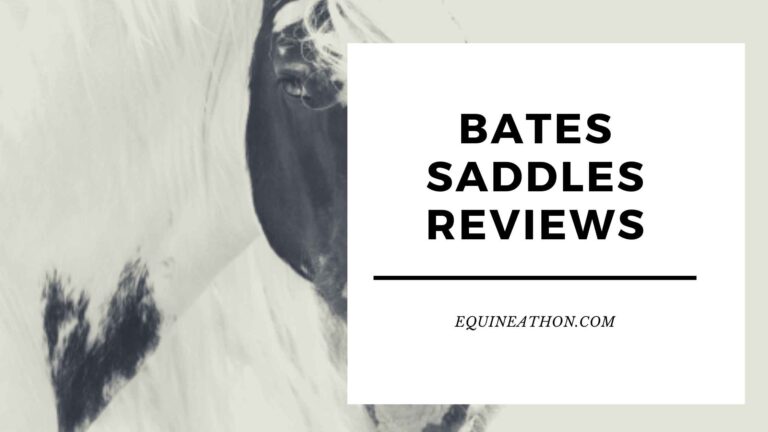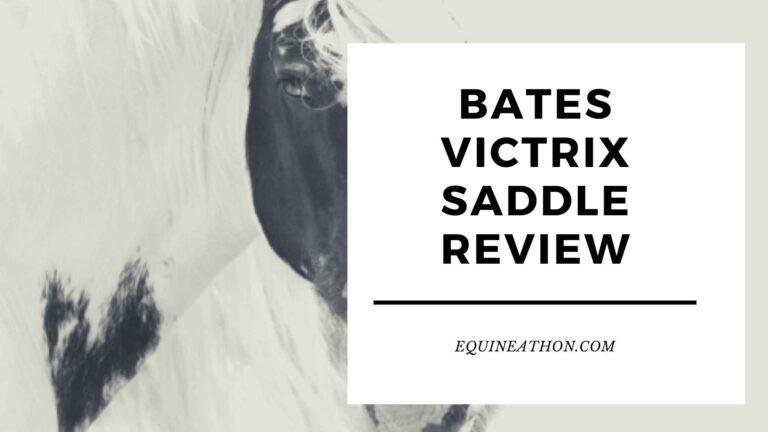Used Western Saddles for Sale – A Guide to Making the Right Purchase
The world of horse riding has a rich tapestry of traditions, skills, and equipment. One of the most iconic pieces of this equestrian puzzle is the Western saddle.
Known for its distinctive look and built for the rigors of ranch work, rodeo competitions, and the open trail, the Western saddle is an integral component of American riding culture.
But what happens when you want the charm, utility, and history of a Western saddle without the hefty price tag of a new one? Enter the market for used Western saddles.
The Appeal of Used Western Saddles
1. Cost Efficiency: Purchasing a used Western saddle can save riders a considerable amount of money. While a brand-new saddle may have the allure of unused leather and unblemished aesthetics, the price can sometimes be prohibitive for many enthusiasts.
2. Broken-in Comfort: Just like a well-worn pair of cowboy boots, a used saddle often offers the advantage of already being broken in. This can mean a more comfortable ride from day one.
3. Historical Charm: Some riders are drawn to the narrative that older saddles possess. Whether it’s a saddle that’s seen decades of rodeos or one that’s traversed many a country mile, there’s a story in every scuff and stitch.
Navigating the Used Western Saddle Market
1. Know Your Needs: Western saddles come in various designs tailored for specific tasks such as roping, barrel racing, or trail riding. Familiarize yourself with the differences and decide on what you need.
2. Understand Saddle Anatomy: Recognize the parts of a Western saddle – from the horn to the cantle, the swell to the stirrups. Knowing these components will help you assess the condition and suitability of a saddle.
3. Check for Damage: When inspecting a used saddle, look for signs of excessive wear, any tears in the leather, and check the tree’s integrity (the internal frame of the saddle). A damaged tree can be a deal-breaker.
4. Saddle Fit Matters: Ensure that the saddle fits both the rider and the horse. An ill-fitting saddle can cause discomfort and potential health issues for your horse.
5. Research the Brand: Some brands are known for their craftsmanship, durability, and comfort. Even when buying used, sticking to reputable brands can be a smart move.
Where to Buy Used Western Saddles
1. Local Tack Shops: These often have a range of used saddles for sale. The benefit here is the ability to inspect the saddle in person before purchase.
2. Online Platforms: Websites dedicated to equestrian gear or general resale platforms can have extensive listings. Always ask for detailed photos and descriptions.
3. Equestrian Events: Attending rodeos, horse shows, or auctions can sometimes yield great finds, and you might even get the story behind the saddle.
4. Word of Mouth: Let friends, fellow riders, and trainers know you’re in the market. They might know someone looking to sell.
Conclusion
Buying a used Western saddle can be both an economic decision and a nod to the rich history of Western riding. With a keen eye, research, and patience, you can find a saddle that’s not only easy on the wallet but also rich in character.
Whether you’re galloping into a rodeo arena or riding into the sunset, a well-chosen used Western saddle can be a trusty companion for the journey.
ALSO SEE: Used English Saddles for Sale
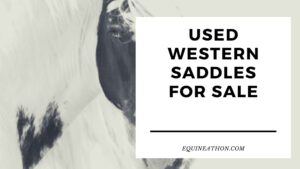
FAQs: Used Western Saddles for Sale
- Why consider buying a used Western saddle?
- Buying a used Western saddle can be cost-effective, offer a comfortable broken-in feel, and come with its own historical charm.
- What are the benefits of a broken-in saddle?
- A broken-in saddle can provide a more comfortable ride from the first use compared to a new saddle that may need time to adjust.
- How does a Western saddle differ from other types?
- Western saddles are designed for ranch work, rodeo competitions, and trail riding, with a distinctive look that includes a horn and a broader seat.
- What are some types of Western saddles?
- Western saddles can be designed for specific tasks like roping, barrel racing, or trail riding.
- Why is saddle fit important?
- A saddle that doesn’t fit properly can cause discomfort for the rider and potential health issues for the horse.
- What should I look for when inspecting a used Western saddle?
- Check for signs of wear, any leather tears, and ensure the saddle tree’s integrity.
- What is the saddle tree?
- The saddle tree is the internal frame of the saddle and is crucial for its structure and fit.
- Where can I buy used Western saddles?
- Local tack shops, online platforms, equestrian events, and through personal networks are all good places to look.
- What are the benefits of buying from a local tack shop?
- You can inspect the saddle in person and possibly try it before purchasing.
- How can I ensure a good fit for my horse?
- It’s recommended to seek guidance from equestrian professionals or saddle fitters.
- Are there risks to buying saddles online?
- Buying online can be risky if sellers aren’t forthcoming with saddle conditions, but requesting detailed photos and descriptions can help.
- How do I know if a brand is reputable?
- Researching brands, reading reviews, and seeking recommendations can help identify quality saddle makers.
- What’s the importance of the saddle’s anatomy?
- Understanding the parts of a saddle can aid in assessing its condition and suitability.
- Can I find used saddles at rodeos?
- Yes, attending equestrian events like rodeos can sometimes offer opportunities to buy or get leads on used saddles.
- Why would someone sell their Western saddle?
- Reasons can vary from no longer needing it, upgrading to a new one, or changes in riding discipline.
- Do used saddles come with a guarantee?
- Guarantees depend on where you buy. Some shops might offer short-term guarantees, but individual sellers may not.
- How much can I save by buying a used saddle?
- Savings can be significant, but it varies based on the saddle’s brand, age, and condition.
- What’s the story behind the historical charm of used saddles?
- Each used saddle may have witnessed various events, from rodeos to long trail rides, giving it unique character and history.
- Are there any red flags to watch for when buying used?
- A damaged saddle tree, excessive wear, and undisclosed issues are some potential red flags.
- How can I clean and maintain a used Western saddle?
- Regular cleaning with saddle soap and conditioners can help maintain its look and longevity.
- What if the saddle doesn’t fit after purchasing?
- Some shops or sellers might allow returns or exchanges, but always check the return policy beforehand.
- Can a used Western saddle be repaired?
- Many saddles can be repaired or restored by professionals if they have minor damages.
- Is the horn on a Western saddle just for show?
- No, the horn is functional and can be used for various tasks, especially in roping.
- Why are Western saddles broader than English saddles?
- Western saddles are designed for longer rides and tasks that require a stable seat, thus they often have a broader base.
- Can children use adult Western saddles?
- It’s best to get saddles appropriate for the rider’s size. There are youth Western saddles available.
- How long do Western saddles typically last?
- With proper care, they can last many decades.
- Are used saddles safe for competitive events?
- If in good condition and fitting properly, used saddles can be used in competitions.
- Is there a best time of year to buy used saddles?
- While there’s no set season, post-competition seasons might see more listings as riders upgrade or change gear.
- Do Western saddles come in different colors?
- Yes, they can range from natural leather hues to dyed versions.
- Can I modify or customize a used saddle?
- Some modifications are possible, like changing stirrups or adding embellishments, but major changes can compromise the saddle’s integrity.
- What materials are Western saddles made of?
- Most are made from leather, but there are synthetic options available too.
- Do used synthetic Western saddles have the same appeal as leather?
- While they might not have the same historical charm, synthetic saddles can be durable and easier to maintain.
- How do I know the age of a used Western saddle?
- Some saddles have a maker’s mark or date stamp, but otherwise, the seller’s information or wear patterns can give clues.
- Are there saddle brands to avoid?
- While it’s subjective, seeking recommendations and researching can help you avoid lesser-quality brands.
- What’s the average price range for used Western saddles?
- Prices can vary widely based on brand, age, and condition, ranging from a few hundred to several thousand dollars.
- Do all Western saddles have a similar weight?
- No, weights can vary based on design, materials, and size.
- How do I protect a used saddle from further wear?
- Store in a cool, dry place, clean and condition regularly, and avoid exposing it to excessive moisture or direct sunlight.
- Can I use a Western saddle for English-style riding?
- While it’s possible, Western saddles are designed for specific tasks and might not be as suitable for English disciplines.
- How often should I inspect a used saddle after purchase?
- Regularly check for any wear, damage, or fitting issues, especially before long rides or competitions.
- Do Western saddles require specific saddle pads?
- Yes, Western saddle pads are designed to fit the broader base and provide the necessary cushioning and protection.



